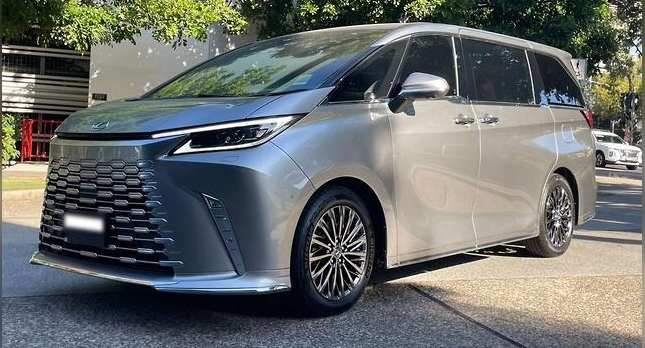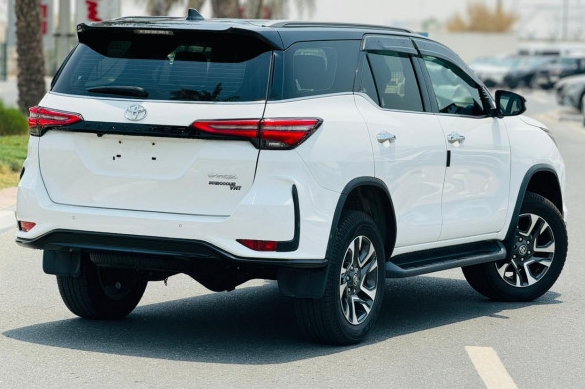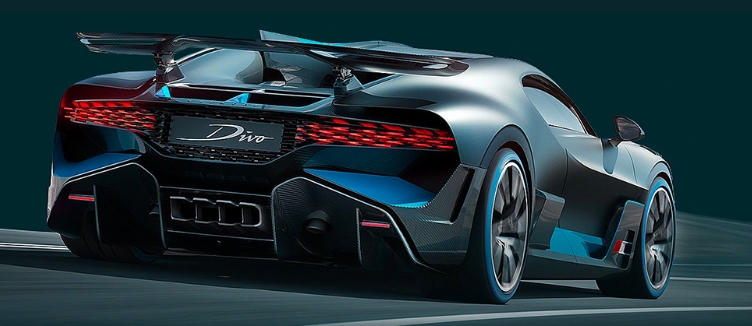The Purposeful Evolution of Restraint: A History of the McLaren 540C
In the rarefied air of the supercar world, evolution is often measured in explosive increments—more horsepower, more aggressive aerodynamics, and ever-dwindling lap times. Yet, one of the most significant cars in McLaren Automotive’s modern history tells a different story. Its evolution wasn’t about radical annual change, but about the perfection of a concept: the idea of an accessible, daily-drivable supercar that sacrificed none of the brand’s core DNA. This is the story of the McLaren 540C, the thoughtful and strategic gateway to one of motoring’s most exclusive clubs.
Genesis: The Sports Series and a New Ambition
To understand the 540C, one must first understand the strategic shift it represented for McLaren. Following the successful re-launch of its road car division with the MP4-12C in 2011 and its evolution into the 650S, McLaren had firmly established itself in the “Super Series” tier, competing head-on with Ferrari’s mid-engined V8s. However, to ensure long-term viability and growth, the Woking-based manufacturer needed to broaden its reach. It needed a car to challenge the likes of the Porsche 911 Turbo S and the Audi R8 V10 Plus—cars that offered blistering performance but with a greater degree of usability and a more attainable price point.
This ambition gave birth to the McLaren Sports Series, unveiled in 2015. The foundational promise of this new family was simple but profound: every car, regardless of its position in the hierarchy, would be built around McLaren’s signature carbon fibre monocoque chassis. For the Sports Series, this was the new “MonoCell II,” a revised version of the tub used in the Super Series, ingeniously designed with lower, narrower sills to make getting in and out significantly easier—a crucial nod to daily usability.
The first car to emerge from this platform was the electrifying 570S. But McLaren’s masterstroke was revealed just weeks later at the 2015 Shanghai Auto Show: the McLaren 540C. Its designation, following McLaren’s established nomenclature, announced its power output: 540 PS (Pferdestärke), or 533 brake horsepower. This was the “baby Mac,” the most accessible car the company had ever produced.
2015-2016: The Arrival and Definition of the 540C
The McLaren 540C entered production in early 2016, positioned as a global model (though its rollout in certain markets, like the United States, was deliberately managed to protect the 570S). Its mission was to be the entry point, but crucially, it was not to be a compromised McLaren. The challenge for the engineers was not what to add, but what to purposefully and intelligently subtract or recalibrate from the 570S blueprint to meet a specific price and character profile.
The Sole Model: The 540C Coupé
Unlike its more powerful sibling, which would eventually spawn Spider, GT, and Longtail variants, the 540C was offered exclusively as a Coupé throughout its entire production run. This singular focus underscored its role as the pure, distilled entry point to the brand. There were no official trim levels in the traditional sense, such as ‘Sport’ or ‘Luxury’ packages that fundamentally changed the car’s name. Instead, the “evolution” and differentiation of a 540C came down to a meticulously curated series of subtractions and a vast, customizable options list.
Here is how the 540C was distinct from the 570S upon its launch:
Powertrain: The heart of the car remained the same 3.8-litre twin-turbocharged M838TE V8 engine and 7-speed Seamless Shift Gearbox (SSG) found in the 570S. However, it was detuned via engine management software to produce 540 PS (533 bhp) at 7,500 rpm and 540 Nm (398 lb-ft) of torque between 3,500 and 6,500 rpm. This was a modest reduction from the 570S’s 570 PS and 600 Nm, resulting in a 0-62 mph time of 3.5 seconds (versus 3.2 for the 570S) and a top speed of 199 mph (versus 204 mph). The performance was still firmly in supercar territory.
Chassis and Suspension: While sharing the same fundamental double-wishbone setup, the 540C’s adaptive dampers were tuned with a greater emphasis on road comfort. The anti-roll bars were subtly softened, making the car more compliant over imperfect surfaces, reinforcing its credentials as a car you could genuinely use every day without punishment.
Brakes: This was one of the most significant mechanical differences. The 540C came standard with cast-iron brake discs clamped by four-piston calipers. The hugely powerful carbon-ceramic brakes, standard on the 570S, were moved to the options list. For road use, the iron brakes offered excellent feel and more than enough stopping power, while also contributing significantly to the car’s lower base price.
Aerodynamics: The aerodynamic package was subtly revised. The 540C featured a unique and slightly less aggressive front splitter and rear diffuser. The intricate “flying buttress” C-pillars and “tendon” design of the dihedral doors remained, but the overall aero profile was tweaked to be less track-focused and more suited to a road car.
Wheels and Tires: The 540C was launched with new, cast alloy wheels in a design exclusive to the model (19-inch at the front, 20-inch at the rear), shod with Pirelli P Zero tires developed specifically for the Sports Series. Forged wheels and stickier P Zero Corsa tyres were available as options.
Interior: As standard, the 540C cabin was trimmed entirely in high-grade leather, a deliberate choice to imbue the car with a more luxurious, grand-tourer feel compared to the Alcantara-focused interior of the more track-oriented 570S.
2016-2021: An Evolution Through Personalization
The production life of the McLaren 540C spanned from 2016 to early 2021. During these five years, the car saw no mechanical model-year updates, facelifts, or changes to its power output. The evolution of the 540C was not one of engineering revisions, but of customer choice and personalization. The “trim levels” were, in effect, created by the original owner through the extensive options list and the McLaren Special Operations (MSO) division.
A base-specification 540C was a relatively rare sight. Most buyers saw the lower entry price as an opportunity to tailor the car precisely to their tastes. This is where the lines between the 540C and 570S began to blur. A heavily optioned 540C could easily exceed the price of a standard 570S.
Common options and packages that defined a 540C’s character included:
The Carbon Ceramic Brake Upgrade: Many owners opted for this, restoring the braking performance to 570S levels and providing a more aggressive look with calipers available in a range of colours.
Sports Exhaust: This was another popular choice, uncorking more of the V8’s theatrical sound and adding a significant dose of drama to the driving experience.
Luxury Pack: Often bundled, this package included a powerful Bowers & Wilkins 12-speaker sound system, power-adjustable and heated seats, soft-close doors, and McLaren-branded floor mats.
Interior and Exterior Carbon Fiber Packs: These allowed owners to replace standard components with gloss or satin-finish carbon fiber, including side intakes, mirror casings, interior switchgear, and chassis sills.
Vehicle Lift: A near-essential option for real-world usability, the hydraulic front-end lift system allowed the car to navigate speed bumps and steep driveways without damaging the expensive front splitter.
Forged Wheels: Lighter and stronger than the standard cast wheels, a variety of optional forged wheel designs not only improved unsprung mass but dramatically altered the car’s aesthetic.
Through MSO, the possibilities were virtually limitless. Buyers could specify unique paint colours, bespoke interior leather and stitching, and even minor aerodynamic modifications. Therefore, while two 540C models leaving the factory in the same year were mechanically identical, they could be vastly different in specification, character, and price.
.

.
The End of the Line and a Lasting Legacy
Production of the entire V8-powered Sports Series, including the 540C, wound down in late 2020 and early 2021. McLaren’s focus was shifting towards a new era defined by hybridization, as heralded by its next-generation supercar, the Artura. The 540C did not receive a direct successor. The Artura, with its V6 hybrid powertrain, became the new entry point into the McLaren lineup, albeit at a higher price point than the 540C it indirectly replaced.
The legacy of the McLaren 540C is profound. It was the car that successfully democratized the McLaren experience without diluting it. It proved that the company’s core tenets—a carbon fiber tub, breathtaking design, and an unparalleled connection between driver and machine—could be delivered in a package that was more approachable, both financially and in terms of daily usability.
For five years, it was the unadulterated essence of a modern McLaren. By forgoing a complicated history of facelifts and trim levels, the 540C maintained a singular purity of purpose. Its evolution was not marked on a calendar with new model years, but in the build sheets of the thousands of unique cars that rolled out of the McLaren Production Center. It was, and remains, a testament to the idea that sometimes, the most intelligent evolution is one of masterful, purposeful restraint.







